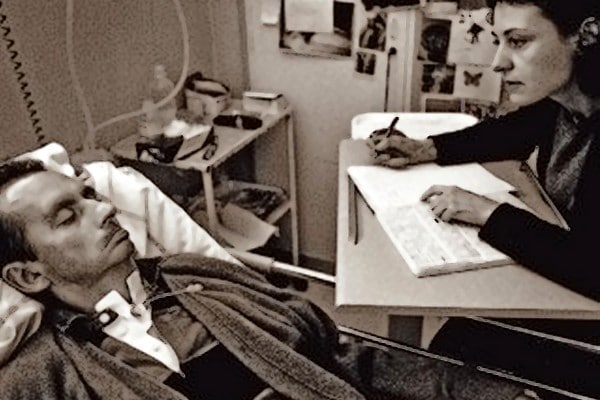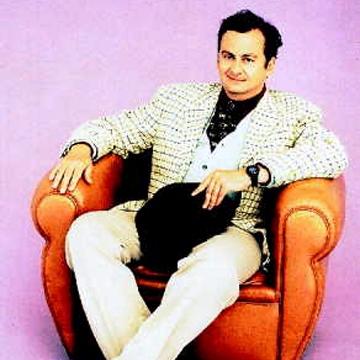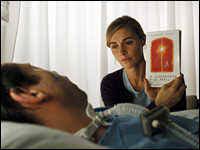
Jean-Dominique Bauby, the editor-in-chief of the French fashion magazine Elle had everything going for him. At age 43, he had a great career, loved his fast cars and gourmet food.

Then, life took an unexpected turn when one day, while driving his son to the theatre, he suffered a massive stroke. When he woke up after being in coma for twenty days, he found himself completely paralysed, lying in a hospital bed. The only movement possible in his body was that of his left eye. He could blink his left eye. This is a condition called the locked-in syndrome. Bauby described the locked-in syndrome as follows:
“You survive, but you survive with what is so aptly known as “locked-in syndrome.” Paralyzed from head to toe, the patient, his mind intact, is imprisoned inside his own body, unable to speak or move. In my case, blinking my left eyelid is my only means of communication.”
Excerpt from The Diving Bell and the Butterfly by Jean-Dominique Bauby
Before the stroke, Bauby had signed a contract to write a book. After the stroke, though completely bedridden, he still wanted to follow through his commitment. At his request, the publisher sent Claude Mendibil, a free-lance editor, to assist Bauby with writing the book.
Bauby would first compose sentences in his mind, memorise them and then dictate them to Claude. These dictations were very different from the ones we may have heard about.

Bauby’s speech therapist set up a communication code by arranging alphabets according to the frequency of usage. Claude then used this code to read out the alphabets from the code, one by one, until Bauby blinked at the correct alphabet.
Bauby and Claudie spent three hours, seven days a week for two months and together they completed the manuscript of the book called “The Diving Bell and the Butterfly”. For Bauby, the diving bell (a rigid chamber used to transport divers into deep waters and back to the surface) was his body and the butterfly was his agile mind that could take a flight to any realm he desired.

This book is a memoir of his life before and after the stroke. He calls this book a set of bedridden travel notes probably because these are accounts of his life as he lay on the bed paralysed while his sharp and imaginative mind wandered from his past to the present and back, reflecting on various drifting fragments of life. Over the course of two months, he blinked 200000 times to dictate the experiences and reflections of his life. The book was published in 1997. Bauby died of pneumonia two days after the French publication of the book (the original French title is Le Scaphandre et le Papillon). It turned out to be a bestseller and continues to inspire many till date. In an interview after Bauby’s death, Claude said “I think perhaps he felt he’d completed what he had set out to do. He could let go.”
As I read the book, I marveled at Bauby’s grit. It exemplifies what the human spirit is capable of. What stood out was the author’s determination to stick to his commitment of writing the book. His sense of purpose, his desire to share his story and of course the essence of what he wanted to say not only made Claude say yes to this assignment, while working on the book, she also became one of his closest confidantes. This story surely is an example of how, not giving up even during the toughest of times gives rise to legendary work. A step taken with belief and determination coupled with asking for help can inspire others to join in and eventually one completes what one had set out to do – sometimes in the blink of an eye.